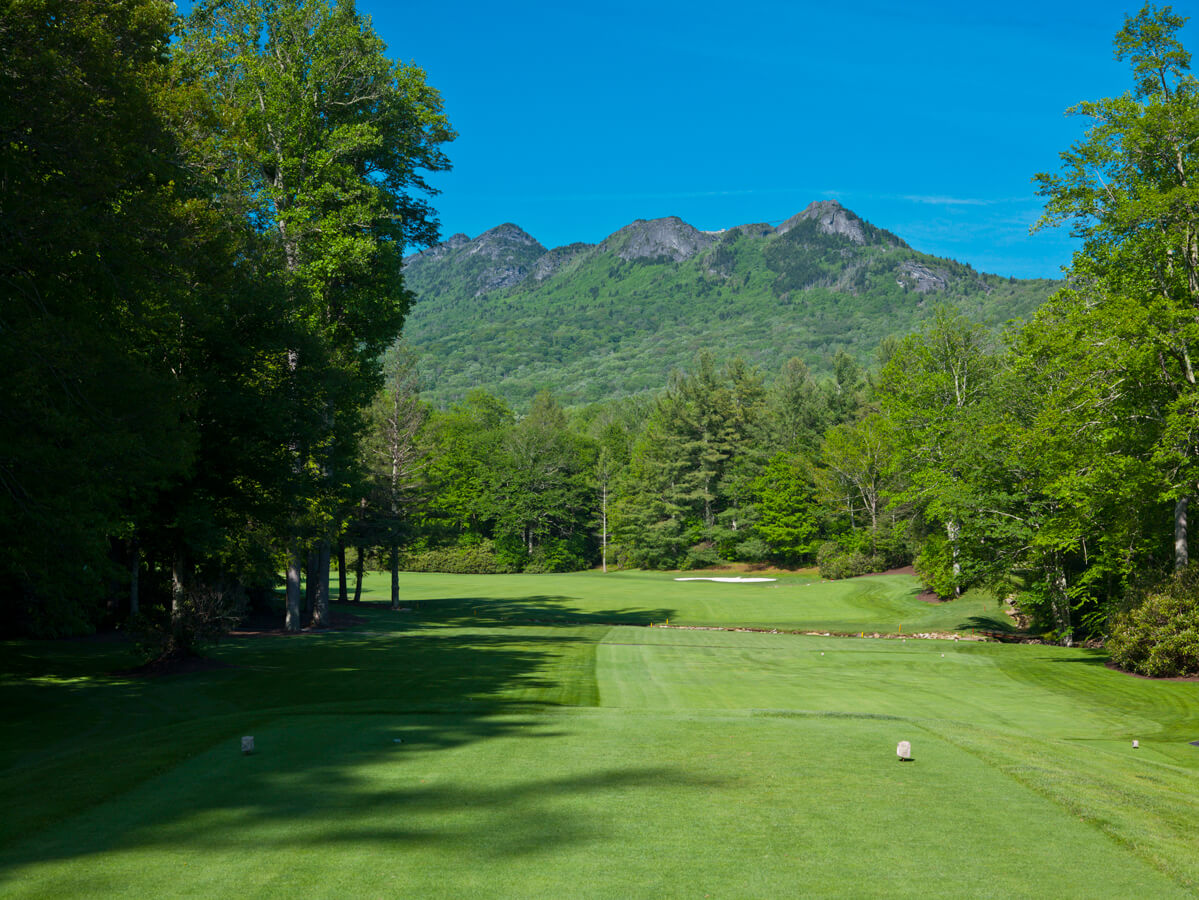“There’s something going on here at Grandfather that is truly special.”
That’s a simple statement coming from a friend of mine at our annual meetings for a nonprofit foundation at Grandfather Golf & Country Club, and one that seems to be echoed around every corner of the mountainside club in Linville, N.C.

A Scottish man named Hugh MacRae laid eyes upon the area in 1885 and immediately purchased land, which would be passed down the family line. In 1964, his granddaughter, Agnes “Aggie” Morton, developed the original concept for a club that was a combination of superior mountain golf and first-rate amenities for families.
So, what makes the club truly special? It’s hard to explain without experiencing it first-hand, but here’s an idea.
Immaculate Mountain Golf
Aggie hired Donald Ross protégé Ellis Maples in 1968 to design the Championship Course, which is consistently considered among the top 10 courses in North Carolina and is second on the current N.C. Golf Panel rankings behind Pinehurst No. 2. Golf is the central component of the club, which features the 7,010-yard Championship Course in the valley and the 18-hole, par-59 Mountain Springs Course running up the mountainside.
Aggie insisted that each hole be an individual unit and there would never be one hole where you could see another from, maximizing views of the mountains and streams. This makes rounding each corner from green to tee a delight—some holes you’ll emerge with a clear view of straight up the mountaintop, like the oft-photographed par-four 8th, and others you’re forced to shape a shot around one of the giant Hemlock trees mimicked by the club’s logo.
Carpet-like greens make for scintillating approach shots—at multiple points in my round I landed a mid-range wedge pin-high that would zip back 10 yards as if I were a tour pro. One must take caution being above the hole on any green, particularly the par-three 14th. Our group could only laugh watching a knee-knocker par putt almost impossibly roll another 30 feet off the front edge of the putting surface.
The Mountain Springs Course is supposedly just as good, according to Director of Golf Operations Chip King. While it maintains a more relaxed feel with only par threes and par fours, it follows the same principals as the Championship Course in terms of making stunning use of its surroundings. Elevation change marks the biggest difference as the Mountain Springs climbs up toward the precipice and back down again.
The courses are open from the first week of May to the last week of October. Both use all cool-season grasses—bentgrass fairways (producing the finest of divots), tees and greens, and bluegrass roughs.

Tradition. Community. Family.
Those words are adorned all over the club, from its website, to scorecards, even business cards.
Scottish themes abound on the property, paying homage to the MacRae family roots. Last year, Grandfather established a sister-club relationship with Nairn Golf Club, based in the Scottish Highlands near where the MacRae’s came from. In August they started the MacRae Cup, an interclub tournament that will rotate between the two clubs annually.
Tradition follows through in the club’s logo, which recently switched to the famed Hemlock tree that guards many a fairway on the property. About 15 years ago, an insect called the woolly adelgid began ravaging the Hemlocks in the Appalachians. The club’s superintendent later discovered a species of beetle near Seattle that feeds on nothing but this pest and transported some back to N.C. to combat it. What resulted was a resounding success, the method being written about and employed nationally. The membership is very proud of the fact that the club is saving their Hemlocks in an environmentally sound way.

A Highlands Escape
The club is by and large a summer residence—a place where members come to escape from the complicated world they live in. In almost perfect harmony, cell service seems to drop out as soon as you reach the gates to the property.
There is no shortage of activities for all ages. The beach club is a popular hangout, featuring a covered patio, brick pizza oven, sand volleyball, and lake craft. Art classes and other workshops are open on a daily basis. You’re bound to also find a sizable group hanging on the club’s grass helipad to take in the sunset.
For hikers, Beacon Heights is a must, although it’s hard to beat the view from the Mile-High Swinging bridge. Next year, our group has planned a visit to the mountain’s enclosed environmental habitats to view cougars, black bears, and other animals in natural settings.
Perhaps the most fun for me is the night golf, as the club lets groups set up on the Mountain Springs after dark with illuminated golf balls and neon light trails bordering the greens.
There really isn’t one thing that makes this place truly special. As they say at Grandfather, “it’s all here.”






